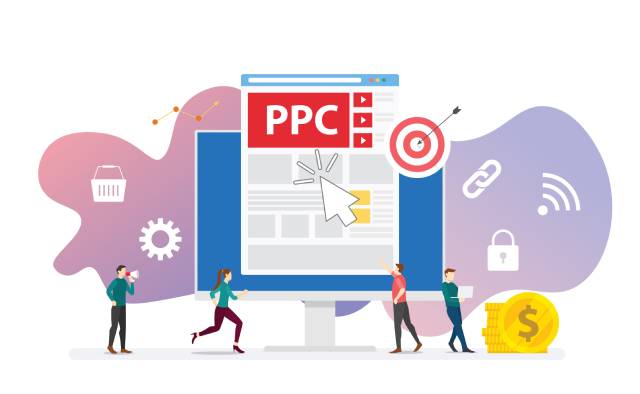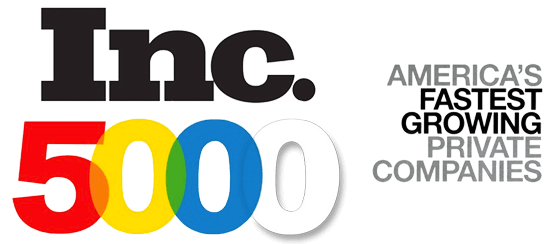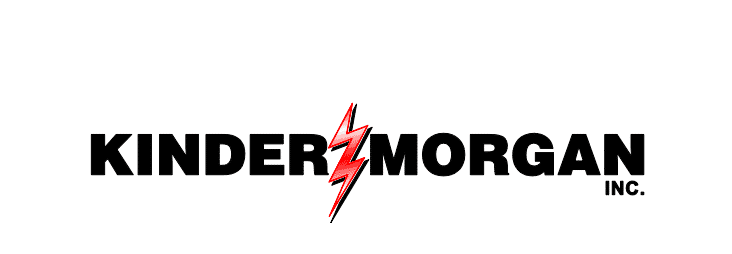
Maximizing return on investment (ROI) in pay-per-click (PPC) and paid social campaigns can be a game-changer for businesses, helping them achieve better results with the same ad spend. But how do you effectively track and optimize ROI in an ever-changing digital marketing landscape? In this blog post, we’ll explore the best tools and practices for “ROI tracking across PPC and paid social best tools and practices”, empowering you to make data-driven decisions and unlock the full potential of your marketing efforts.
We’ll dive into the significance of ROI in PPC and paid social campaigns, the challenges faced in tracking it effectively, and the best practices for maximizing your returns. We’ll also introduce top tools such as Google Analytics, Hootsuite, Sprout Social, and Ruler Analytics, and discuss how to integrate ROI tracking across platforms. By the end, you’ll be armed with the knowledge and strategies needed to optimize your campaigns and drive better results using ROI tracking across PPC and paid social best tools and practices.
Key Takeaways
This article outlines the importance of tracking ROI for PPC and paid social campaigns, as well as challenges associated with doing so.
Leverage tools like Google Analytics, Adobe Analytics, and Ruler Analytics to maximize campaign ROI through targeting & segmentation, continuous testing & optimization and aligning goals with business objectives.
Case studies demonstrate successful strategies used by businesses to track their return on investment across platforms.
Understanding ROI in PPC and Paid Social Campaigns

Return on Investment (ROI) is a critical metric for assessing the efficacy or profitability of marketing campaigns, such as Google Ads or paid social media efforts. The fundamental principle of ROI is to generate a return that exceeds the initial investment in a marketing strategy. In other words, the benefits derived from PPC campaigns, such as landing pages or search ads, should outweigh the costs associated with creating a landing page.
However, tracking ROI in PPC and paid social campaigns can be challenging. Changes in tracking methods, data privacy concerns, and platform limitations can pose significant obstacles.
The subsequent sections will shed light on the significance of ROI tracking, the hurdles encountered, and strategies businesses adapt to efficiently track and optimize their ad expenses.
Importance of ROI Tracking
ROI tracking is essential for assessing the effectiveness of PPC and paid social campaigns and making informed decisions as part of your overall marketing strategy. An efficient ROI tracking enables businesses to assess campaign success, evaluate marketing impact, and steer strategies based on solid data.
To track ROI effectively, businesses should leverage tools and metrics that provide a comprehensive view of campaign performance. These tools include Google Analytics for PPC campaigns and Hootsuite or Sprout Social for paid social campaigns. Leveraging these tools provides businesses valuable insights into target audiences, potential customers, and campaign performance, empowering them to fine-tune and maximize their ROI.
Challenges in Tracking ROI
There are several challenges associated with tracking ROI, including changes in tracking methods, data privacy concerns, and platform limitations. For instance, the phase-out of third-party cookies has led to the development of various analytics and attribution solutions based on first-party data to track user activity and ROI in PPC campaigns.
Businesses can address these challenges by utilizing tools like Google Analytics, Adobe Analytics, and Ruler Analytics for improved campaign data and metric tracking. By using these tools, businesses can effectively monitor their campaigns and make informed decisions to optimize their marketing strategy and maximize their ROI.
Best Practices for Maximizing ROI

To maximize ROI in PPC advertising and paid social campaigns, it’s crucial to implement best practices that help to optimize your efforts in a well-executed PPC campaign. Some of these best practices include aligning campaign goals with overall business objectives, effective targeting and segmentation, and continuous testing and optimization. By incorporating these strategies, you can ensure the success of your PPC marketing efforts.
The subsequent sections will delve into these best practices, discussing their contribution to improved ROI and overall campaign performance. By implementing these strategies, businesses can drive better results from their PPC and paid social campaigns, including optimizing their ppc ads, and make the most of their ad spend.
Aligning Campaign Goals
Aligning campaign goals with overall business objectives is essential for a focused approach to maximizing ROI. Establishing clear and measurable goals for each campaign allows businesses to ensure that their marketing efforts align with their overall business strategy and yield results.
For example, if a company’s overall objective is to increase sales, they should design their PPC campaigns with the specific goal of driving more conversions and generating leads. Aligning campaign goals with business objectives enables businesses to measure campaign success more accurately, make adjustments as needed, and optimize marketing efforts for maximum ROI.
Targeting and Segmentation
Effective targeting and segmentation of audiences can lead to better ad performance and higher ROI. Identifying and targeting specific audiences with custom messages ensures that ads reach intended consumers and resonate with them.
For example, a business selling pet products could target pet owners with ads featuring relevant keywords and images of popular pet products. Effective audience targeting and segmentation can enhance ad performance, increase conversions, and ultimately boost ROI.
Continuous Testing and Optimization
Continuous testing and optimization is a critical practice for achieving maximum ROI. Regular testing of various ad formats, creatives, and targeting strategies helps businesses pinpoint improvement areas and adjust their campaigns accordingly.
For instance, businesses can experiment with different ad formats, such as carousel ads or video ads, to see which format performs best for their target audience. Continuous testing and optimization of ads campaigns ensure maximum ROI and marketing efforts that deliver optimum results.
Top Tools for ROI Tracking in PPC and Paid Social Campaigns

To effectively track and optimize ROI in PPC and paid social campaigns, businesses need to leverage the best tools available. These tools include Google Analytics for PPC campaigns, Hootsuite and Sprout Social for paid social campaigns, and Ruler Analytics for tracking ROI across multiple touchpoints.
The subsequent sections will delve into each of these leading tools, discussing their features, benefits, and their role in enabling businesses to track and optimize their ROI effectively.
Google Analytics
Google Analytics is a powerful tool that provides comprehensive data and insights for tracking ROI in PPC campaigns. With features such as conversion tracking, audience insights, and detailed reports on website traffic and user behavior, Google Analytics can help businesses effectively monitor and optimize their campaigns.
Utilizing Google Analytics provides businesses with the following benefits:
Valuable insights into their target audience
Monitoring campaign performance
Making decisions based on data to optimize marketing efforts
Maximizing ROI
Hootsuite
Hootsuite is a popular social media management platform that offers a social ROI calculator and management tools for paid social campaigns. With Hootsuite, businesses can effectively manage their social media ads, monitor campaign performance, and gain valuable insights into their target audience.
The Hootsuite Social ROI Calculator:
Utilizes ad spend data to calculate potential ROI
Helps businesses to better understand the impact of their social media efforts
Allows businesses to make informed decisions to optimize their campaigns
Sprout Social
Sprout Social is a comprehensive social media management platform that provides advanced analytics and ROI tracking features for social media campaigns. Some of its key features include:
Message-level insights
Follower analytics
Engagement tracking
Keyword analysis
With these tools, businesses can gain a deeper understanding of their target audience and optimize their internet marketing campaigns for maximum ROI.
In addition to its analytics capabilities, Sprout Social also offers features such as Brand Keywords and social media listening, which can help businesses monitor social media for brand-related conversations and mentions, providing valuable insights to measure ROI.
Ruler Analytics
Ruler Analytics is a tool that offers the following features:
Simplifies the tracking of PPC ROI by attributing revenue to marketing across multiple touchpoints
Provides real-time tracking of website visitors
Offers lead scoring capabilities
Allows for automated marketing campaigns
Provides comprehensive data and insights for businesses looking to optimize their PPC campaigns
By using Ruler Analytics, businesses can generate leads and:
Effectively monitor their campaigns
Attribute leads and revenue to their original source using first-party tracking
Make informed decisions to optimize their marketing strategy
Maximize their ROI
Integrating ROI Tracking Across Platforms

Integrating ROI tracking across platforms is essential for businesses looking to gain a comprehensive view of their marketing efforts and accurately measure their return on investment. By integrating data from various platforms, businesses can track key metrics consistently and accurately, recognize the most effective channels, and make data-driven decisions to optimize their marketing campaigns.
The subsequent sections will discuss the significance of data consolidation and cross-channel attribution in integrating ROI tracking across platforms, and how these strategies can enhance business marketing efforts and ROI.
Data Consolidation
Data consolidation is essential for ROI tracking as it facilitates the elimination of data redundancy, standardization of data, and the creation of a centralized repository for all pertinent data. By consolidating data from multiple sources, businesses can gain a more precise and comprehensive view of their performance metrics, thereby enabling them to make informed decisions and optimize their return on investment.
Consolidating data from various platforms enables businesses to monitor audience activities, gain valuable insights into their target audience, and devise more effective marketing campaigns.
Cross-Channel Attribution
Cross-channel attribution provides marketers with the insight to evaluate the contribution of each platform to the overall ROI. Implementing cross-channel attribution allows businesses to understand their marketing channels’ efficacy and evaluate each channel’s impact on sales.
Cross-channel attribution offers several benefits, including:
Optimizing marketing strategies
Boosting brand recognition
Increasing customer loyalty
Improving conversions
By tracking and analyzing data from multiple channels, businesses can make data-guided decisions on resource allocation to boost their return on investment.
Monitoring and Adjusting PPC and Paid Social Campaigns

Regular monitoring and adjusting PPC and paid social campaigns is crucial for maximizing ROI and ensuring the success of your marketing efforts. The subsequent sections will discuss the significance of regular performance reviews and scaling successful campaigns for enhanced ROI and overall campaign performance.
Implementing the strategies discussed in this blog post can help businesses optimize their campaigns, achieve superior results, and maximize their ad spend.
Regular Performance Reviews

Conducting regular performance reviews is critical for assessing progress and making necessary adjustments to optimize PPC and paid social campaigns. Regularly reviewing campaign performance allows businesses to identify potential improvement areas, make the needed adjustments, and ensure optimum results from their marketing efforts.
Some of the benefits of conducting regular performance reviews include:
Establishing and monitoring objectives
Avoiding misunderstandings
Maintaining engagement
Reducing the stress of year-end performance reviews
Scaling Successful Campaigns
Scaling successful campaigns is critical for maximizing the impact and efficacy of marketing efforts. By scaling successful campaigns, businesses can reach a larger audience, generate more conversions, and ultimately achieve a higher ROI. Furthermore, scaling enables businesses to pinpoint strategies and tactics that are producing positive results and replicate them across different campaigns or channels.
To scale successful campaigns, businesses should focus on strategies and tactics that have proven to be effective, such as optimizing campaigns for relevant keywords, targeting the appropriate audience, and testing various ad formats and creative. Continuous testing and scaling successful campaigns can help businesses maximize their ROI and ensure their marketing efforts yield the best possible results.
Case Studies: Successful ROI Tracking in Action
Examining case studies of successful ROI tracking can provide businesses with valuable insights into the tools and strategies used to maximize returns. For example, Buffer, an all-in-one social media marketing and ROI tool, offers:
A free plan to manage up to three channels with basic tools
Paid plans starting at $5 per month for “Essentials”
Paid plans starting at $10 per month for “Team”
Paid plans starting at $100 per month for “Agency”
These case studies showcase how businesses have successfully leveraged tools such as:
Google Analytics
Hootsuite
Sprout Social
Ruler Analytics
To monitor ROI and enhance their campaigns, businesses should analyze successful ppc ads examples. By learning from these examples, businesses can develop their own strategies for maximizing ROI and driving better results from their PPC and paid social campaigns.
Examining these case studies and adopting the best practices discussed in this blog post can help businesses optimize their campaigns, achieve superior results, and get the most from their ad spend.
Summary

In conclusion, effectively tracking and optimizing ROI in PPC and paid social campaigns is crucial for businesses looking to maximize their marketing efforts and drive better results. By implementing best practices such as aligning campaign goals, targeting and segmentation, and continuous testing and optimization, businesses can improve their campaigns and achieve a higher ROI.
Leveraging top tools such as Google Analytics, Hootsuite, Sprout Social, and Ruler Analytics, and integrating ROI tracking across platforms through data consolidation and cross-channel attribution, businesses can gain a comprehensive view of their marketing performance and make data-driven decisions to optimize their strategies. With the right tools and strategies in place, businesses can unlock the full potential of their PPC and paid social campaigns and drive better results.
Frequently Asked Questions
How do you track ROI for PPC marketing?
To track your ROI for PPC marketing, import your cost data into Google Analytics and view the report under Reports > Acquisition > Campaigns > Cost Analysis.
You’ll then be able to see your costs, revenue, and ROI breakdowns by source/medium.
What are the best metrics for tracking social media ROI?
Measuring your social media ROI requires tracking Reach, Audience engagement, Site traffic, Leads generated, Sign-ups and conversions, and Revenue generated.
Click-Through Rate (CTR) can provide insight into the effectiveness of your social call-to-actions (CTAs).
What is ROI in PPC marketing?
Return on Investment (ROI) in PPC marketing is the ratio of your net profit to your total costs, which includes ad spend on Google Ads, Facebook or any other search engine or social media platform.
What is a good ROI for PPC?
A good ROI for a PPC campaign is generally considered to be one where the revenue generated exceeds the cost, providing a positive return on investment.
What is the importance of aligning campaign goals with overall business objectives?
Aligning campaign goals with business objectives is critical for achieving ROI goals and helping the business reach its success targets.






















